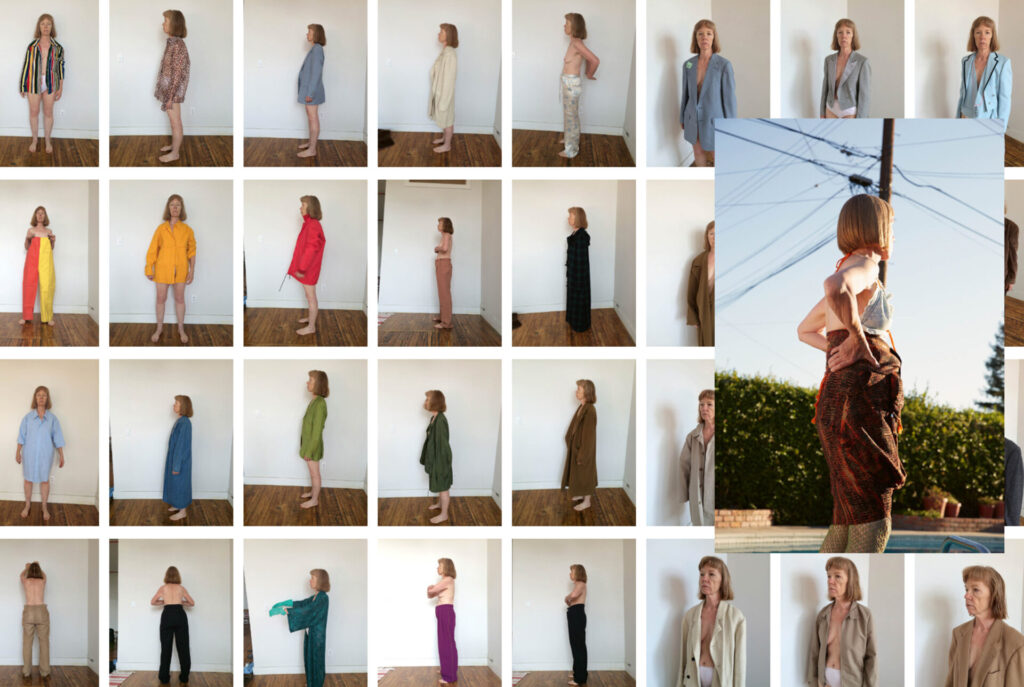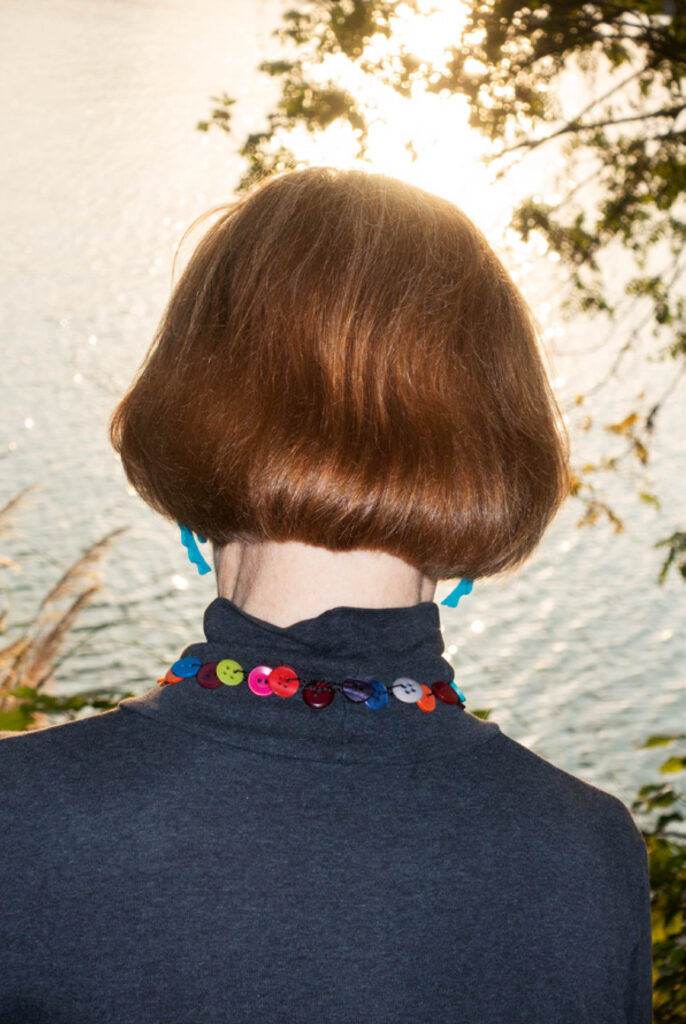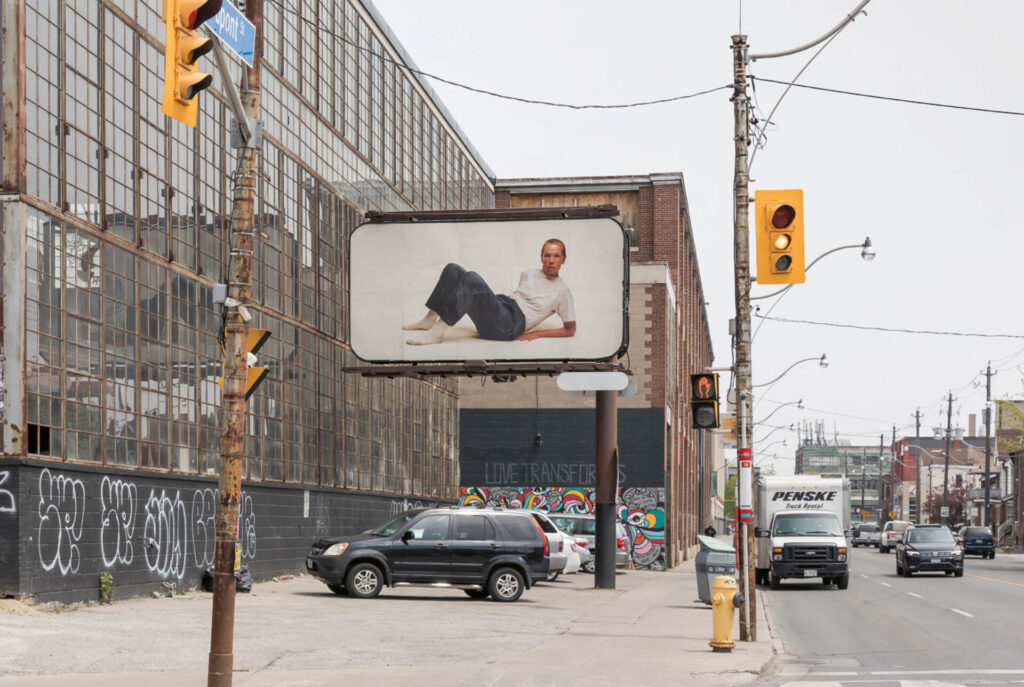CHARLIE ENGMAN and KATHLEEN ENGMAN in conversation

For over a decade, Charlie Engman has photographed his mother Kathleen Engman in obscure pockets of the world. At first, Charlie began photographing Kathleen because it was convenient – she was there. But soon the two became natural creative partners in a project that, unbeknownst to either of them, would grow into an intense collaborative body of work. As Covid-19 began to spread across the country in 2021, Kathleen temporarily relocated from Chicago to the Big Apple. With no end to the pandemic in sight, she decided to bunker down in the city, leaving the two time to shift into the next stage of their collaborative process. While in New York, Kathleen has also worked on a series of fashion-related projects, including walking for the Balenciaga Couture show – a ‘feather in cap’ moment – as well as collaborating with Charlie on the Collina Strada SS22 show for New York Fashion Week. to Be sat down with the mother-son duo to discuss Charlie’s book, MOM, its reception, and how their creative lives have intertwined in light of the publication’s release.
Sarah Buckley: Hi Kathleen and Charlie, thank you so much for meeting with us. I want to start at the beginning … I was reading that you’re originally from Chicago, is that right?
Charlie Engman: Yeah, I grew up in the suburbs of Chicago and then I went to university in the UK. I was there for four or five years. Then I graduated and my visa expired so I came back to Chicago briefly before I moved to New York. Basically because … well, where else do you go as an American? [Laughs] I think I had a bit of PTSD from London and I kind of figured New York was where I wanted to be.
SB: And what about you Kathleen, were you always living in New York or were you in Chicago until Charlie left?
Kathleen Engman: I still live in Chicago with Charlie’s Dad. I’m sort of the family van. [Laughs] I was like, “Okay I’m leaving for New York!” and now Charlie has trouble getting me to go home. I will say that the folks at Collina Strada have really gone out of their way to make it possible for me to be here. There have been some amazing opportunities that came up for me here via my work with Charlie. And with the pandemic, I didn’t really know when I could go back so I simply hunkered down here. We used to call it couch surfing [laughs]
SB: Are you sleeping on Charlie’s couch then or have you got your own couch?
KE: Well, it’s sort of complicated! I am not on Charlie’s couch [laughs].

CE: Essentially, I’ve been living in New York and periodically I would go and visit Mom and make some work or she would come to New York and stay for a while and work there, or we would take trips. Typically, we would take a classic American road trip and make work. When the book finally came out it was right at the beginning of the pandemic, which was a bit of a strange thing because we were anticipating that the book would have a sort of life … but the life of the book has been different than we imagined.
SB: A little short lived?
CE: Yeah, rather than having book signings or gallery shows, nobody really knew what was going on and we couldn’t meet in person so we migrated to the internet.
SB: How did you find that? You’ve obviously been working on this project for over a decade – it feels pretty monumental in that sense.
CE: There was a bit of a postpartum feeling it came out. The selfish part of me was like, “Oh, I worked so hard on this thing and then the whole world shuts down when I release it.” But I also think that we did benefit in a way. People were hungry for talks online and interacting with people in that virtual space brought a different kind of attention.
SB: So were you promoting the book through interviews online?
CE: Yeah, pretty much. Mom, what was your experience with the book coming out?
KE: Of course I cried my eyes out when mother’s day in America came. But as Charlie was just saying, things moved along and requests from all over the planet to have us talk came through. I don’t think that would have happened had there been a big in-person launch – people would have moved on to the next thing. As for me, I was still in Chicago. The murder of George Floyd and the things that coalesced rapidly after that around #BlackLivesMatter changed, for me, the context in which I could talk about the experience of making the book. We had travelled to Toronto, Japan, China and talked to people of all ages, genders, walks of life about their experience encountering these images. Suddenly I thought, “How does this make a statement in the world about the need to be as yourself as you can be?” So yeah, it’s been a powerful year. Very humbling and challenging.

SB: The dynamic between you two, the psychology of it, seems to be the pivotal question around the work. Actually, how was your exhibition in China?
CE: People were pretty receptive. Obviously, we were not allowed to show any nudity there – that’s not allowed by the government. But generally speaking, we had a very positive response. From my memory of it, there was a lot of talk about how family roles in family in China are very codified and how this was sort of challenging that notion. It was sort of exciting to them.
KE: Well, while you were there in a professional context, I escaped a little bit with my translation apps. In addition to the formal international photo festival, there was a lot of community work. People had distributed cameras and invited townspeople to create work and to write about the people in their portraits. People saw these portraits of me and started chasing me down the street. We had a really interesting question from someone in the audience: “If I do this, what you’re doing, will I be happy?’ That really stuck with me.
AB: That’s such a moving question. I guess on that note, Charlie you’re capturing your mother in so many different ways, and I guess it brings up questions around being a parent, a mother, and what that means in today’s context. Contrastingly, do you have a feeling of responsibility as a child?
CE: That’s something I’m still figuring out. Photography sort of murders context, so you have to care for context as you would a child. I mean, the act of photographing anyone in that way requires care. Photographing her has prompted me to really reflect on what my role is, and on my responsibilities towards the people I am photographing, as well as to the audience. And the book coming out seems to have changed a lot of the personal relationships my mom had, plus she’s been getting lots of work here.
SB: Kathleen, were you working much in creative spheres before or was it through Charlie that you got involved?
KE: It didn’t occur to me until well into the book development stage of this nearly decade-long project. My background is not particularly in the arts at all. I didn’t consider myself creative prior to this work.
AB: So together you’ve been working on the Collina Strada collection too? That must be fun.
CE: Yeah, I’ve been very close with the designer for years now, she was one of the first people I met in New York. We’ve been collaborating heavily for the last two or three years, producing the collections and shows together so it’s very much been a fusion of two creative worlds. Naturally, I wanted Mom to be a part of that process. It was important for me that Mom and I made work together. I wanted to bring her into these commercial spaces and be as non-compartmentalised or non-hierarchical as I could, and allow all the different types of methodologies that I engage with as a creative person to include her, too.

SB: Speaking of shows … Kathleen, can you tell us about your experience walking for Balenciaga Couture?
KE: My understanding is that it was originally a project proposed to Charlie, and that I would be a part of it. Then as the pandemic made moving people and things around difficult and delayed, the creative direction of the project evolved and changed. Charlie was no longer involved but at some point somebody said to me, “Would you still come walk on the show?” And I’m like, “Sure, why not?” It felt very
‘feather in cap’ to me, because it was a really important moment in fashion. I couldn’t have predicted the direction that house would go – but more power to them. And the best part … I met incredible people.
SB: Charlie, do you have any exhibitions coming up, or new books to release?
CE: I will have some exhibitions coming up soon, along with a more traditional book publishing project. But I don’t like to plan ahead too much. I mean, I never would have predicted the pandemic, my mother moving to New York or coming to work here. So, I don’t like to put the cart before the horse, if you know what I mean. Why I do photography in the first place is that I really respond to its reactive quality. You can have as much intention as you want, but ultimately you’re forced to just confront what is in front of you, and it might not be or do what you expect.
Marni in Paris
By Anna Prudhomme
Reflections on craft and form at Milan Fashion Week
By Rachel Weinberg
NOIR: Hyperbolised Forms
By Billy De Luca
Gucci's Men's Fall 2024 Collection Cements Sabato De Sarno's Refined Sensibility
By Katie Brown
Comme des Garçons Homme Plus Takes Us to a Spiritual World
By Carwyn Mcintyre
GOYA
Help Us See Fashion Today
By Billy De Luca